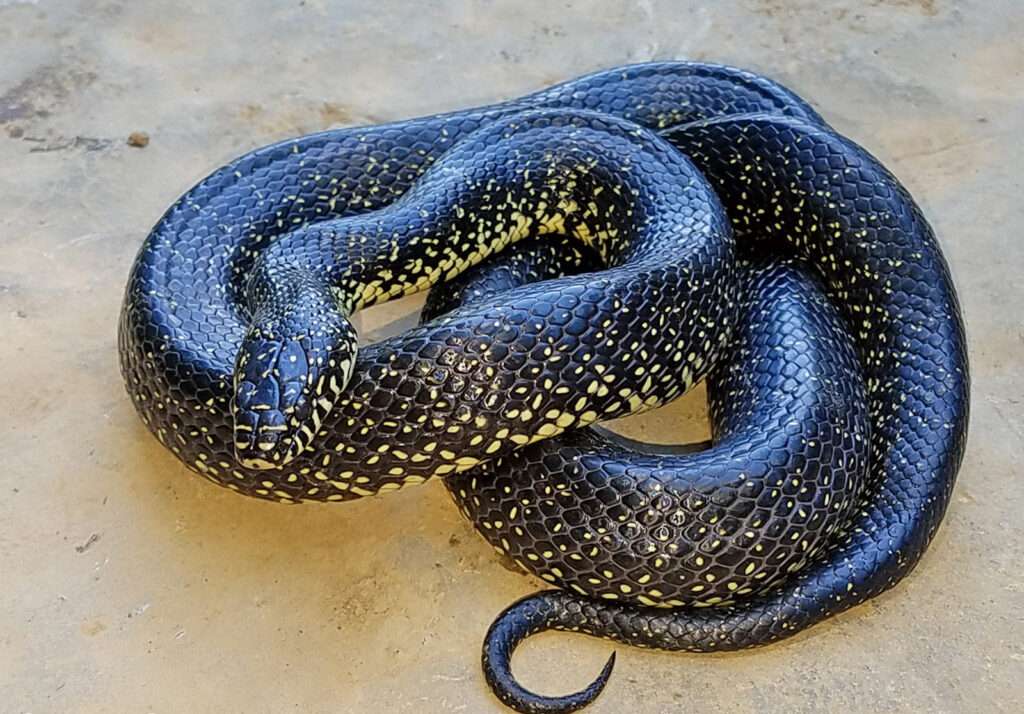
Description:
Scientific name: Lampropeltis nigra
Life span: 10-15 years
Black Kingsnakes have little yellowish markings on their head and back and are stocky, medium-sized, and black snakes. The belly is checkered in black and white. Their neck and head blend together. They have beautiful, silky scales.
Native Region/Habitat
The black kingsnake is found throughout the southeast of the country, from southern Illinois to Ohio, then along the Alabama River watershed and the northern Gulf Coast in south Alabama, along the coast to the Mississippi River in Louisiana, and finally down along the foothills of the Appalachian Mountains.
Behavior:
The solitary, nocturnal eastern kingsnakes are reptiles. They spend the day foraging, moving around, soaking up the sun, or sleeping under the leaves. They may convert to nighttime activity on hot summer days. These snakes can swim and climb trees in addition to living on the ground. They hibernate during the winter in hollow logs, abandoned mammal burrows, or caves or rock crevices. Venomous snakes can be eaten by eastern kingsnakes. They employ a hunting strategy where they clamp down on the jaws of the deadly prey to prevent getting bitten, but even if they are, they are immune to the venom.
Care As a pet/In captivity:

These little snakes are simple to take care of, do well in captivity, and develop a tolerance for handling early on.
- Ten-gallon vivariums should be used to house newborns (or similarly sized plastic tubs). Young Eastern Kingsnakes should be upgraded to a 20-gallon-long tank when they reach 24 inches in length.
- All kingsnakes require a temperature gradient in their enclosure because they all self-thermoregulate.
- Eastern Kingsnakes require a cool side that is between 75°F and 80°F. An under-tank heater or a low-watt ceramic heat emitter can be used to warm this. Thermostat and thermometer are required for both devices.
- Their enclosure’s hot side should be between 85 and 90 degrees. The area that should be the warmest is the area right beneath a 75–100 watt basking lamp. The ideal lamp is a basking spot lamp that can alternate between day and night.
- You should feed frozen-thawed prey to captive animals. By doing this, predator-caused injuries during eating can be reduced. These snakes can adapt to frozen-thawed prey with ease.
Table





